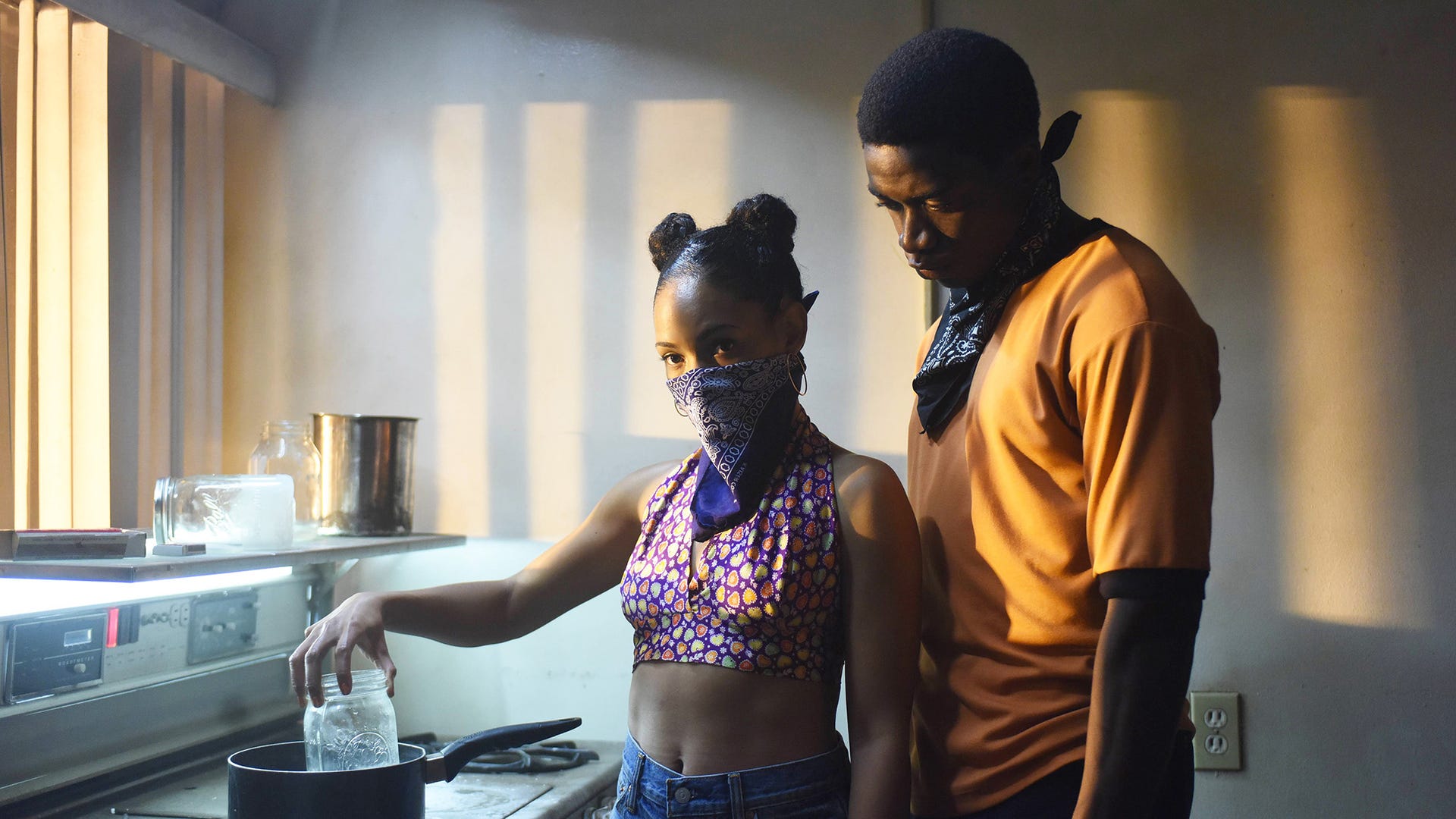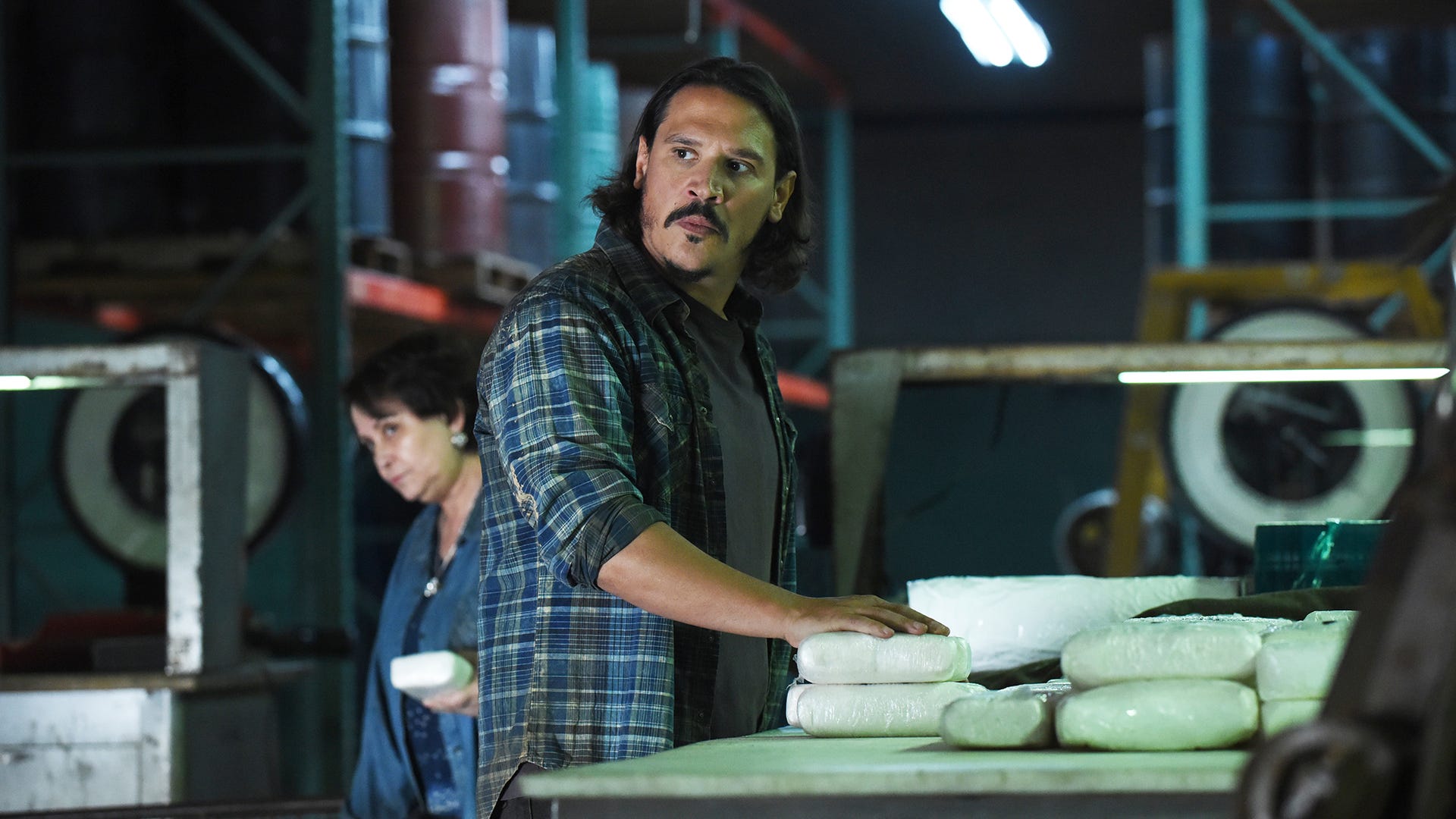Join or Sign In
Sign in to customize your TV listings
By joining TV Guide, you agree to our Terms of Use and acknowledge the data practices in our Privacy Policy.
Here's How TV Shows Make It Look Like Actors Are Doing Coke
The secrets of TV drugs, explained
Avance Smith -- "Smokey" as he's called -- spent a good chunk of his 57 years in prison.
"I grew up in LA all my life," he said. "For a lot of us in LA at that time, gangs and drugs was just something you grew up around." He saw guns, homicide and crack cocaine devastate lives up close; his mother's crack habit got so bad that she ended up living in an abandoned house, where she smoked non-stop. In 2016, Smith was fresh out of prison and working a construction job when his younger cousin John Singleton called him up to see if he wanted a job on a new show he was doing, Snowfall. "He said, 'I got something you can help me with. I have the story; I just don't have the authenticity you know about. You lived it, and you can help me tell it.'"
As technical advisor on Snowfall, which ends its third, well-received season Sept. 11, Smith gives notes on big and small elements that make the 1980s-era crime drama feel real, from costumes to hair to what people talk like. But there's one area of Smokey's specific expertise that is of monumental importance on Snowfall: making realistic-looking crack.

Angela Lewis, Damson Idris Snowfall
FX"It's an old trick people who were in the game knew about," he explained. "It's a pill called Pamprin; when you crush it and mix it with Vitamin E and baking soda, it makes it come together and clump up." The rocks viewers see being cooked up, sold, and smoked on the show follow Smokey's patented mix -- a concoction so convincingly similar to the real thing that, back in the day, that entirely coke-free blend would stump unsuspecting fiends dealers duped on the street. "Until they smoke it. But, when you bring it back to me, you can't tell me it's not the real thing."
Smokey's background might make him one of the more untraditional consultants toiling behind the scenes to make a show look believable, but the work he does isn't uncommon at all. While television is just now getting over long-standing taboos about showing penises, showing women terminating a pregnancy, or even depicting gay sex, shows have been way less shy about showing people doing drugs, specifically using cocaine.
Cocaine in brick form has been a mainstay of cop shows like Miami Vice for decades, but as buzzworthy shows like Snowfall, Netflix's Narcos, and USA's Queen of the South dazzle viewers with gritty tales about the devil's dandruff, they're spending real time, effort, and money to make the coke look real and make it look like people are really doing it. It's one thing to show bricks of fake Hollywood drugs -- the bricks on Snowfall are plaster -- but another to heighten the reality by showing people actually using them. Curious as to how shows replicate the illicit drugs on camera, TV Guide did some digging to find out what it takes to make it look like people are using cocaine (and crack) on some of TV's biggest shows.
Euphoria Cast Hopes the Show Will 'Start a Conversation' About Realities of Teenage Life
Most often, powdered B-12, a vitamin used to keep blood and nerve cells healthy, passes for cocaine. Actors who actually have to snort it on-screen say it's not enjoyable at all. "It sort of clogs your nose up," said Andrew Rannells, who stars with Don Cheadle in Showtime's powder-happy Black Monday. Rannells hoovered up his fair share of B-12 on HBO's Girls too. "I do think there's a tiny bit of placebo effect. You do have energy, but it's not the best way to take vitamins." (Indeed, health care experts agree that putting anything up your nose is much never a good idea.) B-12 is also the stand-in for cocaine on the Starz drama Power, where Joseph Sikora, who plays Tommy, occasionally hoovers the stuff and feels... something. "You almost need a shot of vodka at the end of the day to come down."
There's no formal, industry standard, although safety comes first. Danny McBride, creator and star of The Righteous Gemstones, said he's accustomed to using lactose powder in shows where his character does drugs. That also gets clogged in an actor's nose and, depending on the user, could prompt a trip to the bathroom.
On other shows, the powder never even makes it up the actor's nose. On Euphoria, prop masters would line straws with Vaseline, so as the actor snorts the powder, it ends up inside the straw rather than inside their schnoz. Ask five people how it's done and you could get as many answers, although very few of them will have the depth of first-hand expertise Avance Smith brings to Snowfall.

"The Game That Moves As You Play " -- Season 3, Episode 4 (Airs Wednesday, July 31, 10:00 pm ET/PT) -- Pictured: (l-r) Adriana Barraza as Mariela, Sergio Peris-Mencheta as Gustavo Zapata. CR: Ray Micshaw/FX
Discover your new favorite show: Watch This Now!
"When we had RZA on the show, I had to show them how to cook it in a jar," he said. Watching the rocks form, he couldn't help reflecting on the absurdity of the moment -- and his good fortune. "This job, it helped give me a purpose, something to do with myself and feel positive. I can't believe I'm getting paid for this and not going to jail. It's a trip."
Snowfall concludes Season 3 Sept. 11 at 10 p.m. on FX. Power airs Sundays at 8 p.m. on Starz. The Righteous Gemstones airs Sundays at 10 p.m. on HBO. Black Monday and Euphoria are available on Showtime and HBO on-demand, respectively.
